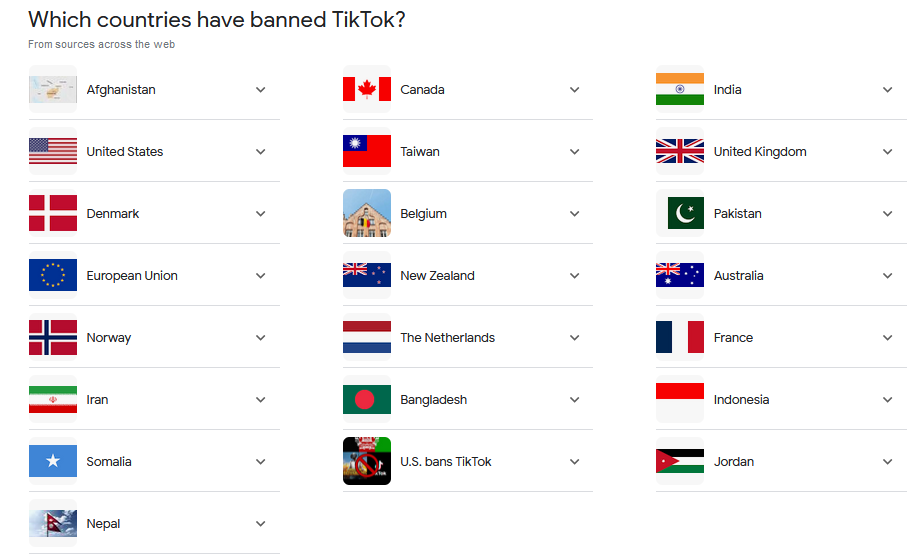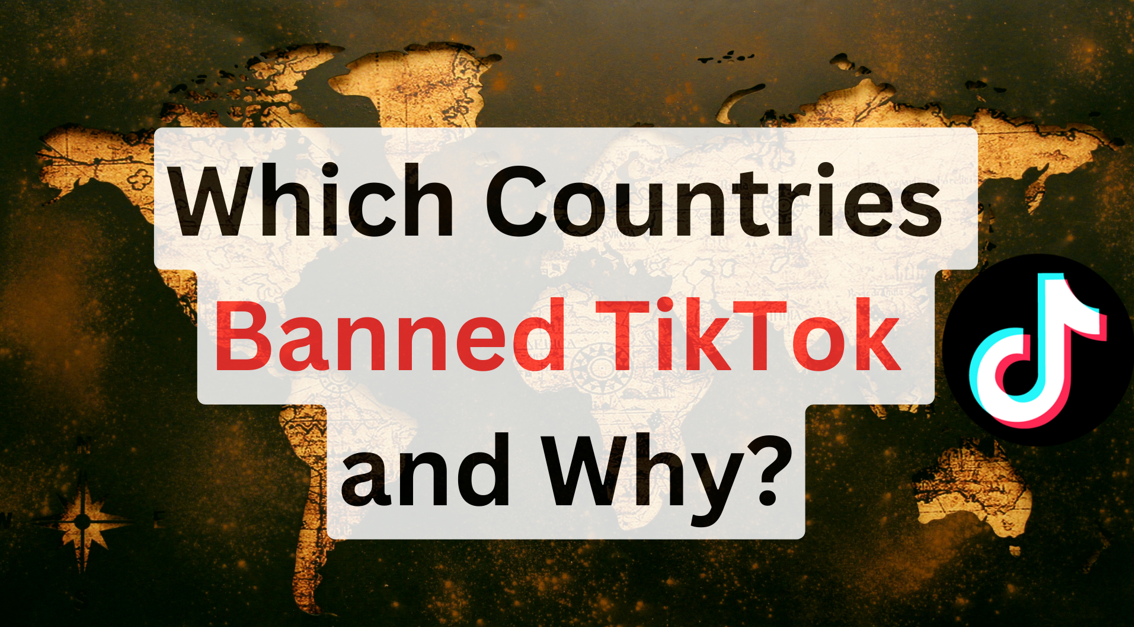TikTok, the wildly popular short-form video app, has taken the world by storm, amassing billions of users across the globe. However, not every country welcomes this dance party with open arms. In recent years, several nations have implemented varying degrees of restrictions on the app, ranging from complete bans to partial limitations on access.
From Complete Shutdowns to Cautious Steps:
The reasons for these restrictions are diverse. Some, like Afghanistan and Pakistan, cite concerns about “immoral” content and potential negative impacts on youth. Others, particularly in the Western world, raise national security anxieties due to TikTok’s ownership by the Chinese tech giant ByteDance. These anxieties center around data privacy, potential censorship, and possible manipulation by the Chinese government.

Which countries have banned TikTok?
Here’s a breakdown of some notable restrictions:
| Country | Restriction Level | Reason Cited |
|---|---|---|
| Afghanistan | Complete Ban (2020) | “Immoral content”, “negative impact on young minds” |
| India | Complete Ban (2020) | National security concerns |
| Pakistan | Temporary Ban (2020) | “Immoral content” |
| European Union | Ban on official devices (2023) | Security concerns |
| Taiwan | Ban on government devices (2022) | Security concerns |
| United Kingdom | Ban on government devices (2023) | Security concerns |
| United States | No national ban, individual agency restrictions | Security concerns |
| Indonesia | Temporary block (2018) | Concerns about pornography |
| Bangladesh | Temporary block (2018) | “Negative impacts” on society |
Why Countries Are Banning TikTok
The TikTok landscape is complex and fluid. While some countries take a hardline stance, others implement selective restrictions or engage in discussions to address concerns. Additionally, the situation can evolve rapidly, with bans lifted or implemented based on changing circumstances.
- National Security and Data Privacy Concerns: The core issue for many governments is TikTok’s ownership by a Chinese company, ByteDance. Concerns exist over the potential for the Chinese government to access user data collected by TikTok. This data could be used for surveillance or intelligence purposes.
- Censorship and Content Control: Some governments are uncomfortable with the type of content circulating on TikTok and worry that the Chinese government could use the app to influence public opinion or spread propaganda.
- Protection of Minors: Concerns exist about the app’s potential negative impact on young users, including exposure to inappropriate content, cyberbullying, and addiction.
- Content moderation challenges: The sheer volume of user-generated content makes effective moderation a daunting task, raising concerns about harmful or inappropriate content.
- Cultural sensitivities: Different cultures have diverse standards regarding acceptable online content, requiring platforms to adapt their offerings.
Alternatives to TikTok:
While no single platform perfectly replicates TikTok’s experience, several options cater to different aspects that users might enjoy:
Similar Short-form Video Experiences:
- Instagram Reels: Offers a similar video creation experience within the established Instagram ecosystem, leveraging its massive user base for potential reach.
- YouTube Shorts: Leverages YouTube’s vast audience and integrates with the platform’s existing features and monetization options.
- Triller: An earlier competitor to TikTok with a focus on music, boasting robust editing tools and collaborations with popular artists.
- Lomotif: Another short-form video platform emphasizing social features and challenges, gaining traction in certain regions.
Platforms with Different Flavors:
- Snapchat: Pioneered the disappearing message format and offers unique features like augmented reality filters and lenses for a creative outlet.
- Likee: Popular in Southeast Asia, known for its advanced editing tools and special effects for creating visually striking videos.
- Firework: Focuses on live streaming and short-form video content, offering a different take on real-time engagement with creators.
- Vigo Video: A global platform with a strong presence in South America and Southeast Asia, offering a variety of content categories and live features.
Niche-Focused Options:
- Funimate: Caters to fans of editing and creating music videos, offering a wide range of transitions and effects.
- KWAI: Popular in Latin America, emphasizes short videos with a focus on music and comedy content.
- Cheez: Targets a younger audience with an emphasis on lip-syncing and dance challenges, known for its vibrant and playful atmosphere.
Choosing the right alternative depends on individual preferences:
- Content focus: Different platforms cater to specific niches like music, comedy, or live streaming.
- Target audience: Consider which platforms your desired audience and potential collaborators use.
- Features and tools: Compare editing capabilities, special effects, and monetization options across platforms.
The Future of Tiktok:
As TikTok continues to expand its reach, navigating these restrictions will be crucial for its long-term success. Finding solutions that address security concerns, ensure data privacy, and respect cultural sensitivities will be key to keeping the dance floor open for everyone.
Related Posts












